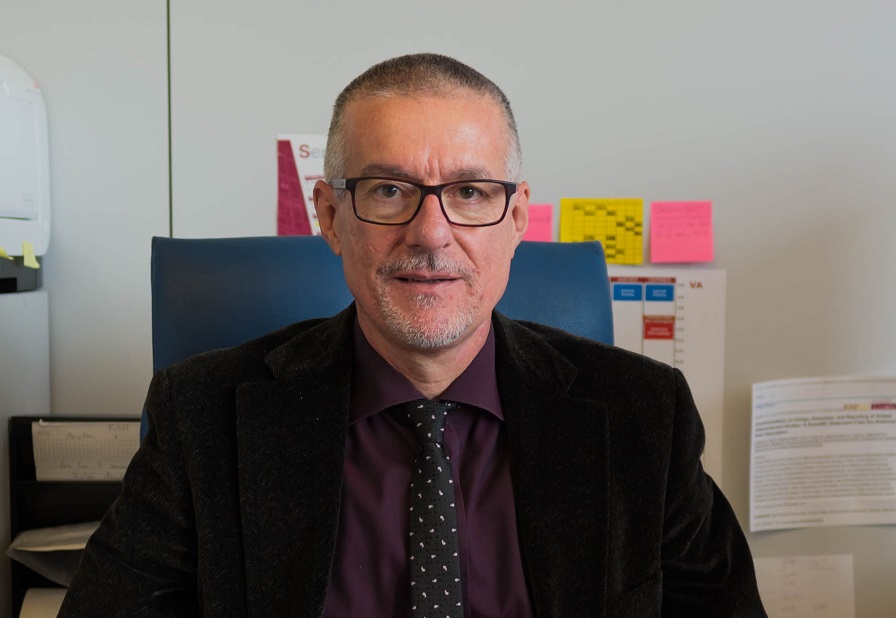A new Project from CNIC that researches new treatments for Progeria, funded in the E-Rare 2017 call
The project ‘Identifying new treatments for Hutchinson-Gilford progeria syndrome’ (HGPS) TREAT-HGPS, coordinated by Dr. Vicente Andrés will receive funding of 797,744 € over the next three years
The project ‘Identifying new treatments for Hutchinson-Gilford progeria syndrome’ (HGPS) TREAT-HGPS, coordinated by Dr. Vicente Andrés, researcher at the Carlos III National Center of Cardiovascular Research (CNIC) and also associated to the Research Networking Center for Cardiovascular Diseases (CIBER-CV), has received funding in the E-Rare joint transnational call 2017:”Transnational Research Projects for Innovative Therapeutic Approaches for Rare Diseases” and will receive funding of 797,744€ over the next three years (2018-2020).
The objective of the call for this European Union (EU) program is the collaboration between scientists from different countries in a common interdisciplinary research project based on complementarity and the exchange of experiences, with a clear focus on translational research in rare diseases. Unfortunately, research on rare diseases is not only scarce, it is also dispersed in different laboratories all over the EU. This shortage of experience results in a late diagnosis, few medications and difficult access to medical attention. That is why rare diseases are an excellent example of an area of research that would greatly benefit from European and international coordination. In this context, the EU E-Rare call was created, which aims to provide an international model platform for the implementation of research on rare diseases.
The research on rare diseases is not only scarce, it is also dispersed in different laboratories all over EU
Rare diseases are potentially life-threatening or chronically debilitating pathologies that affect less than five in 10,000 citizens in the EU. It is estimated that there are between 6,000 and 8,000 different rare diseases, affecting between 6% and 8% of the population over the course of their lives. This means that the total number of people affected by rare diseases in the EU ranges between 26 to 30 million. One of these diseases is the premature aging syndrome called Progeria or HGPS (Hutchinson-Gilford Progeria Syndrome). The disease is caused by a mutation in the LMNA gene that causes the expression of progerin, a mutant form of the pre-lamina A protein. Children with HGPS appear normal at birth, but during the first 12-18 months of life they begin develop characteristic symptoms of the disease (growth retardation, alopecia, wrinkles on the skin, loss of body fat). In addition, they undergo an accelerated process of aging characterized by excessive arteriosclerosis that inevitably leads to death in adolescence, especially due to myocardial infarction or stroke. This extremely rare disease has no cure and recent clinical trials with monotherapies proved to be modestly beneficial for patients.
The project, coordinated by Dr. Andrés, which also involves other participants like Dr. David Filgueiras, from the San Carlos Clinical Hospital of Madrid; Dr. Karima Djabali, from the Technical University Munich in Germany; Dr. Ryszard Rzepecki, of the University Wroclaw of Poland, and Dr. Giovanna Lattanzi, of the CNR Institute of Molecular Genetics of Italy-, is based on the hypothesis that existing drugs that have shown some efficacy in preclinical models of progeria can cause synergistic effects when administered jointly. The TREAT-HGPS consortium will use available models of cells and HGPS mice to develop new therapies using "cocktails” of medications. The consortium will also evaluate the reversibility of progerin-induced damage by suppressing its expression, either in the whole body or just in target tissues, at different stages during the progression of HGPS in mice, this project will lay the foundations for more efficient therapies to combat HGPS.











